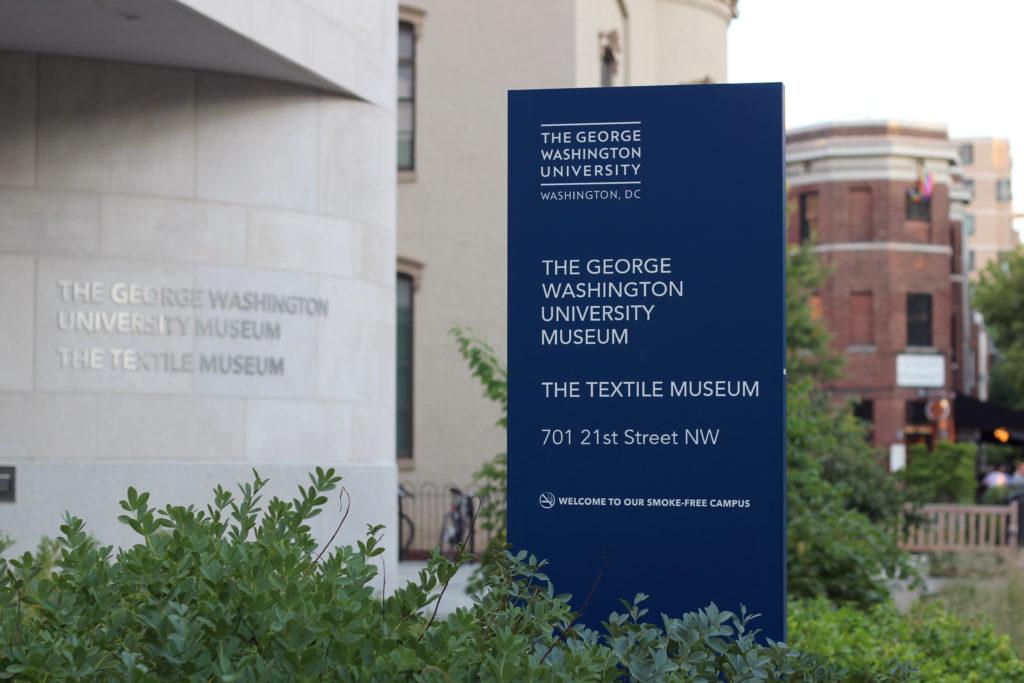Updated: Nov. 14, 2019 at 11:18 p.m.
D.C. Water data shows that four buildings on campus have lead pipes, but officials said GW-owned buildings are free of lead in both the pipes and water supply.
D.C. Water’s water quality map – which shows buildings around D.C. that could have lead – indicated that 17 buildings on campus may have contained lead pipes in 2016. John Deignan, D.C. Water’s water communications coordinator, said the map is largely based on historical data, like plumbing and maintenance activity records.
On campus, the map shows that the GW Deli, the athletics department at 619 22nd St., St. Mary’s Episcopal Church, Lisner Hall and 2008 G St. – which has since been demolished – could have contaminated water pipes.
Deignan said D.C. Water worked with the University to test buildings previously listed on the map after officials contacted D.C. Water about the buildings in 2017. He said the data “isn’t always up to date or accurate” and that D.C. Water officials often need to dig into the ground to confirm if a pipe is contaminated with lead.
“We always say that the only way to get rid of the risk of lead is to identify and remove all lead sources,” Deignan said.
He said treatments, like adding the food-safe chemical orthophosphate to drinking water, can minimize lead contamination. But Deignan said broken fragments of the pipe can still contaminate water when it travels through plumbing and becomes trapped in a faucet aerator.
Deignan added that D.C. Water will update the map once individual owners or companies replace their buildings’ water pipes.
“Not only do we replace a lot of them, but we’re also able to make sure that what is shown is accurate,” Deignan said.
University spokeswoman Crystal Nosal said the University surveyed and inspected all GW-owned buildings after D.C. Water released the 2016 map, and officials found no lead pipes and “no traceable levels” of lead in the water supply in buildings officials or students use.
“While the University has addressed all reported issues related to lead pipes, we will continue to coordinate with D.C. Water as needed,” Nosal said.
Any buildings constructed after 2004 – when the University inspected all service lines – do not have lead pipes, Nosal said. She said lead pipes at the GW-owned Woodhull House at 2033 G St. were replaced during the neighboring Textile Museum’s 2013 construction.
Nosal said one of the four listed buildings, 2008 G St., was demolished during the Law Learning Center’s 2011 construction. She added that officials do not know if St. Mary’s Episcopal Church, another site listed on the D.C. Water map, has lead pipes because GW does not own the building.
The D.C. Water map states that GW Deli “likely” has lead pipes “based on historic documentation.” The athletics department townhouse on 22nd Street has copper pipes in its public space, but a February 2017 excavation revealed lead pipes in the building’s private side.
Nosal declined to say how often the University conducts lead pipe studies and whether University policies on lead pipes have changed since 2016.
Lead experts said cities have been slow to replace lead pipes because of high costs, but water departments can treat the water running through pipes to minimize health effects.
Richard Rabin, a Massachusetts Coalition for Occupational Safety and Health volunteer who previously directed the Massachusetts Department of Labor’s Occupational Lead Poisoning Registry, said some cities have been slow to remove lead pipes because the process is expensive.
“It’s usually several thousand dollars,” he said. “Cities and towns are very reluctant to get to doing that at least in any kind of rapid pace.”
Drilling a hole for a new pipe in a home’s basement costs a baseline of $720, plus an average of $120 per foot from the house wall to the home’s property line, according to D.C. Water data. A District law that went into effect last month offers financial aid to cover the costs of replacing lead pipes for homeowners in areas where D.C. Water has already replaced part of the lead service lines supplying those homes.
Peter Simon, an associate professor of epidemiology at Brown University who has studied the effects of lead exposure, said lead pipes are concerning, but keeping water at the right acidity prevents metals like lead from leaching into a water supply.
“The most important thing about lead in water is that the water people who know how to manage water systems can mitigate human exposure just by treating the water properly,” he said.
Lia DeGroot contributed reporting.
This story has been updated to reflect the following:
The headline and lede of this story have been changed to more accurately reflect the University’s lead pipe inspections.




